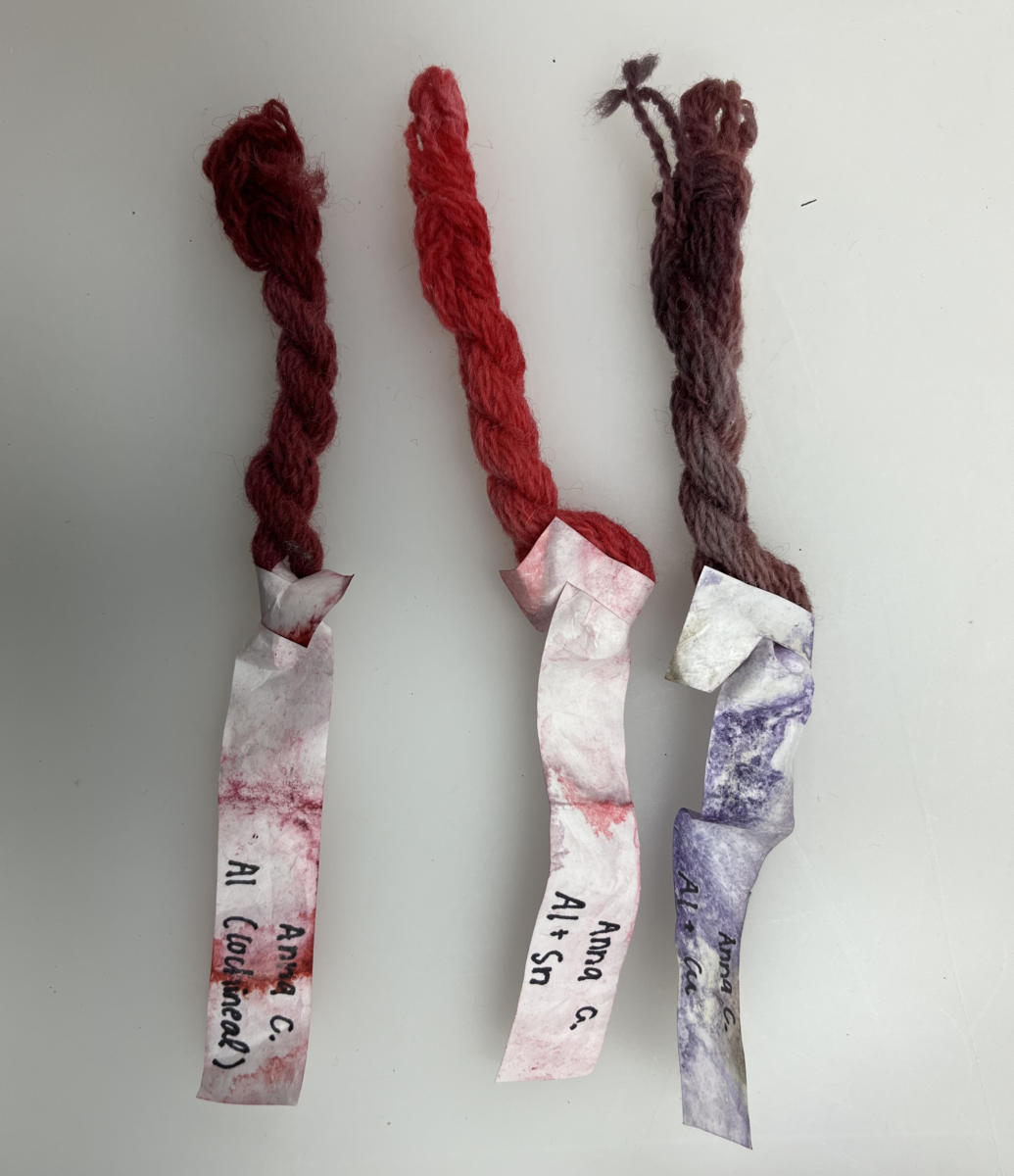
- To understand the difference between pigments and dyes
- To experience processing a natural dye and dyeing natural fibers
- To understand how natural dyes were made historically
- To understand how additives such as mordants and fixatives affect the dye color
- To understand how the absorption of light influences how we interpret a color
- To understand the artist’s process of creating a painting
- To introduce Infrared Reflectography and Ultraviolet imaging as methods for observing underdrawings in a painting
Curricular Tie-ins:
This painting and dyeing workshop is a useful tool to introduce color analysis and some of the analytical methods that are used in technical art history.
Students will be able to answer the following questions:
- What tools and resources are available for technical art historians to conduct color analysis?
- Why is color analysis important in technical art history?